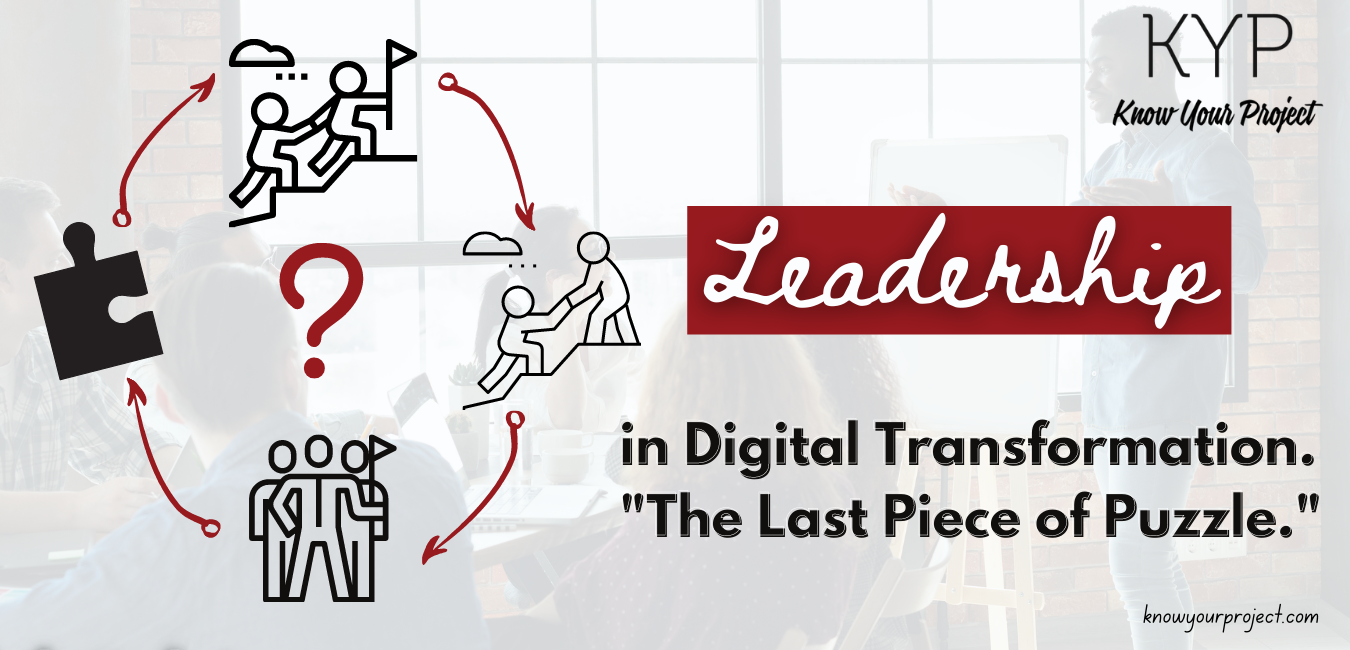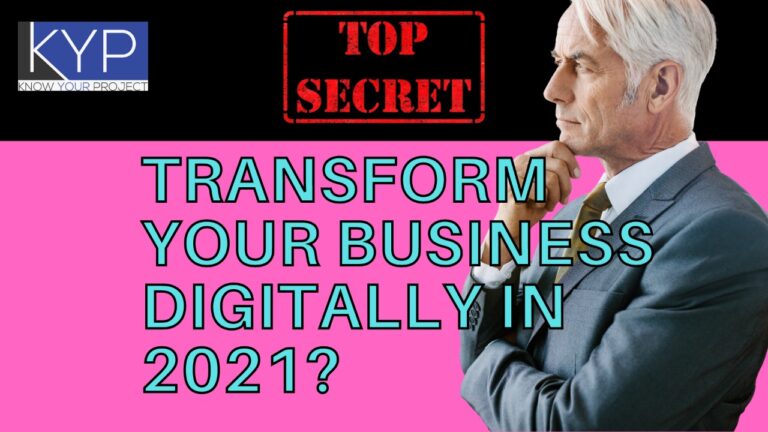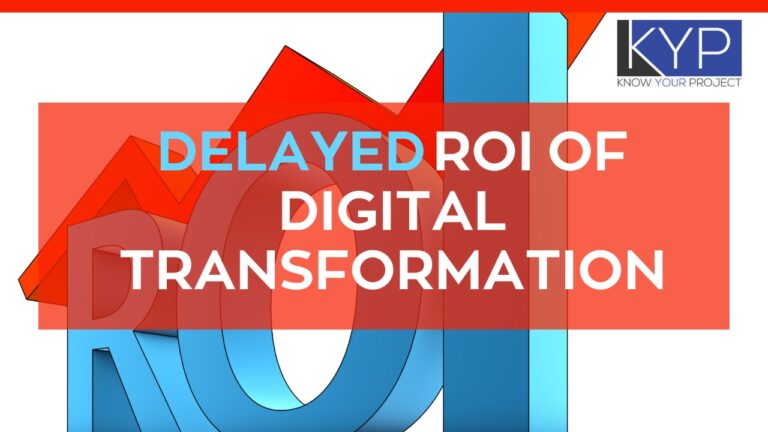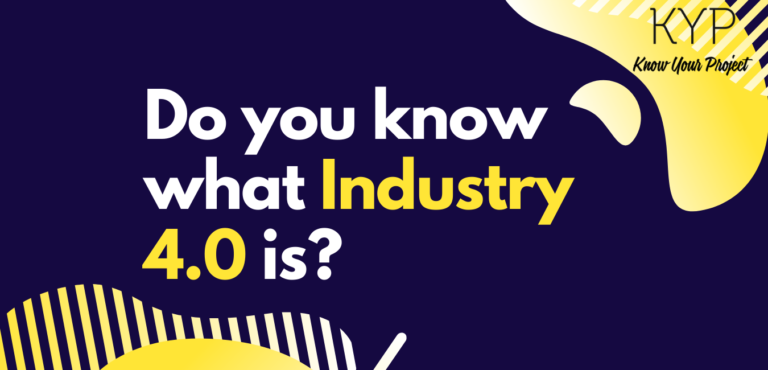Leadership in Digital Transformation—The Last Piece of Puzzle.
Series: From the five critical factors of digital transformation #5CritialFactorsofDX 5/5
WE found it!! Do you know why most of the companies fail? It is because they need reformation from the base, the “change first comes from the leaders and not from the technology,” and since the pillars of an organization are weak, we have nothing but the hope of light.
Find out how non-leaders become leaders with a little help.
Today’s leader wants everything in a lap on the very second day of new business, they are eager; eager to win, eager to compete and earn.
But one must know “In order to sell, we must learn to sell first.”
Whenever we talk about the transformation, we think of extreme conditions. For a cute chubby person trying to lose weight out of insecurity, transformation can be losing tons of kilos within a month. Nobody can lose that much weight but, the urge of quick results without thinking of the side effects does not strike in the person’s head. The proper way of losing weight is to have a vision, formulate objectives and goals, and then make strategies. Lastly, embrace uncertainty. These are the quality of a leader.
A large number of organizations are adopting digitalization with the speed of light. Just go on Google and search “richest people in the world,” and name me a single person who became a billionaire without the help of the digital world and mentors. This article is the heart of all the other four factors of DX.
“How many of the millenniums can survive without digital technology?”
Leadership in the digital era is a complex task. The mindset of a leader is a factor to encourage digitization. Alvin Toffler wrote an essay “future shocks” in the 1970s, in which he talks about the rapid changes that will happen in society and how the human civilization would react to such drastic change. Seem like he predicted the future.
Mental Model or a Model by a Mentor?
The role of leadership in the digital world is a bit crucial because leadership includes no specific definition. Many empirical studies exist when it comes to digital leadership. James and Joel (authors of Orchestrating Transformation) proposed a “mental model” in which they used fancy terms like music, orchestra to elaborate digital leadership. They suggested the need for a “Chief Transformation Officer” who will identify the changes. James and Joel were criticized by a lot of people later. There are many other business models, but no model is universally accepted.
So, what when we cannot follow a specific business model? Well, the best way is to adopt organizational-change leadership.
There is a term in the business world known as “Management by a disaster.” It denotes the traditional ways that are still using by organizations to this day. Only leaders are allowed to make decisions, and employees are their puppets. Higher-level staff (CEO, managers, engineers) are bound to do the creative work. The whole system is nothing but a disaster. The organizational structure needs immediate changes. For the change, how about we consider “model-by-a-mentor?”
Leaders are embracing the digital world, and they are known as “Digital Masters.” So, how to be a Digital Master? A. Hire a consultant, B. Achieve level one by becoming Digital Learner. C. Follow the below points and chop all the barriers stopping you from organizational change.
a) Strong vision and action:
If the organization has no vision, then it will never adopt the digital transformation. Why? Because our vision defines us, our whole business plans and activities are dependent on our vision. It is like oxygen to humans. The top management should know where they are going as they are the “main drivers of buses” (organizations). The decision-makers should not have any conflicts regarding the vision. The organization is going global. So, personal grudges or any other independent factor should not affect the organization.
b) Encourage creativity and participation of employees:
Don’t just rely on managers, engineers, and the CEO. Make employees feel like they are part of the organization, do not blame them for their mistakes. Instead, be a good leader and teach them to grow. Drive out fear. Encourage the employees to give their advice. “Management philosophy” should be adopted. Most employees have lots of ideas when an organization is changing its traditional ways to the digital world. But due to fear, they do not speak. When your company is launching the business to the digital market, ask your employees to participate and to come with new ideas.
c) Cultural changes:
Organizations should change their traditional ways. They should adopt methods that promote: risks, focuses on the employee, working hours, and everything that can help their way to success. Risks are the way to improve if you are taking it for the better cause. If you think your business needs new strategic plans and should start from scratch, then do it. If you are thinking of introducing something new to your business but afraid of the public reaction, do not be, do it. Don’t just sit and overthink.
When launching your business in the digital world, be open to criticism. Answer all the questions raised by employees and the public. Listen to others’ perspectives without judging. Adopt the change but do not mix it with your ethics and morals.
d) Know the importance of customer:
“Customer is the king!” you must have heard this statement many times. Well, this statement is a fact. The customer either makes us or breaks us. Especially in the “digital world,” where companies are getting exposed to almost everyone. It is compulsory to understand the customer’s needs. One bad deal and your company can be in danger. Yes, there are many cases where the company had to shut their business because of severe criticism from customers. The companies in past couldn’t bear the hate and shut it down instead of approaching the right solution; consultants, trainers, and project managers.
Leaders should seek help and support to stay equal on track with their customers. They must allow customers to participate in their business through feedback and questionnaires. Make customer-oriented strategies.
Keep in mind that customer needs, perceptions, and hopes can vary when starting the journey of “digital transformation.”
DX Mentorship > Organizational-change > Leadership-change
The point of this article is to provide necessary information regarding leadership when introducing your business to the digital world. A mentor can mould and shape your sweet definition of “change” and turn your companies into real-time players. Nobody likes to stay back, neither to be called a “boomer,” so why should your company (not any less) stay back and be called a “grumpy-old factory?” Leadership is the last puzzle piece with which a company can cross any storm and win anyone.









2 Comments
Comments are closed.